The captivating beauty and elegance of the Saddlebred horse make it an alluring subject for photography enthusiasts and hobbyists alike. With their striking features and dynamic movement, capturing these animals in their prime requires an in-depth understanding of their history, conformation, and the environment in which they perform. This knowledge, combined with the right photography skills and techniques, will enable you to create stunning and captivating images of these magnificent creatures, showcasing their unique qualities and charm for all to behold.
Table of Contents (Horspedia)
History of the Saddlebred horse
The Saddlebred horse breed has a rich history that spans back to the early settlers of the United States. When English Thoroughbreds and Narragansett Pacers were brought to the New World, these horses were bred with the local Galloways. The result was the development of the American Saddlebred, a horse known for its amazing athletic abilities, smooth gaits, and beautiful appearance. As a Saddlebred horse photographer, understanding this history will allow you to appreciate the breed’s unique qualities and skillfully capture these majestic animals in your work.
Throughout the years, the Saddlebred has been bred for versatility and adaptability, not only for riding but also for work and pleasure. This breed has naturally occurring ambling gaits: the slow gait and the rack, making them popular and comfortable riding horses. These qualities make the Saddlebred stand out in the photography world, allowing for stunning action shots that showcase the horse’s elegant movements, extraordinary athleticism, and effortless grace. As you progress in your Saddlebred horse photography, make sure to highlight these unique qualities that make these horses so special.
In the 19th century, the Saddlebred horse became extremely popular in the United States, particularly in the South. Many plantation owners would host horse shows to display their horse’s talents to the community. The competitive nature of these events quickly spread throughout the country, making the Saddlebred a sought-after breed that remains as a symbol of elegance and style to this day. When photographing these horses, remember their significant role at these historic events, and consider incorporating the essence of these grand Southern plantations and horse shows into your photos.
Knowing that the Saddlebred horse was bred for the show ring since the beginning makes it clear why they are such natural performers, making them perfect subjects for show photography. Saddlebreds excel in various disciplines, such as saddle seat, driving, and in-hand classes, which make for excellent photo opportunities. When capturing a Saddlebred at a horse show, focus on these various disciplines to show the versatility and astonishing abilities of this breed.
Throughout the years, the Saddlebred horse has gained a reputation for being an intelligent, willing, and showy breed, always giving their best in the show ring. Their beautiful high-stepping gait and proud bearing make them visually stunning to watch, and their expressive intelligence shines through in every photo. As an enthusiast or hobbyist looking to become skilled in Saddlebred horse photography, understanding the history and characteristics of this breed will enable you to capture the true essence and beauty of these remarkable horses in your work.
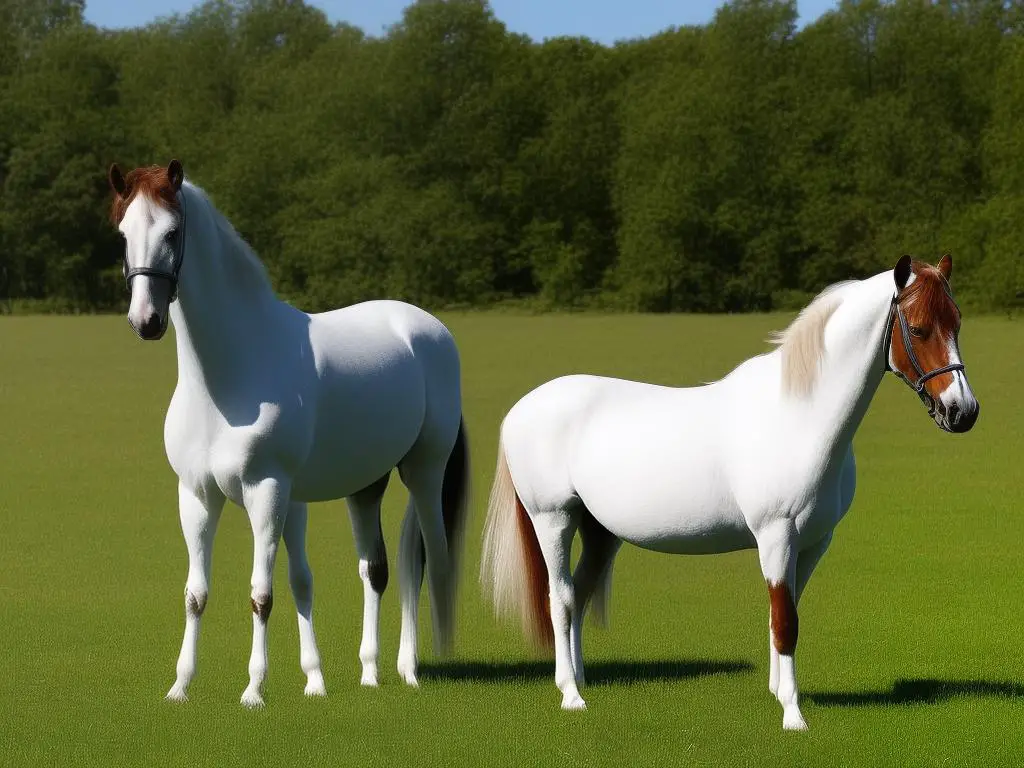
Understanding Saddlebred horse conformation
Photographing Saddlebred Horses
As a photographer, focusing on the unique features of Saddlebred horses is essential when capturing their essence. The elegance of their arched necks is a prime aspect to consider when photographing these horses. This distinct feature is often accentuated when they are in motion, making it an important characteristic to highlight in photographs. Aim to capture the curve of the neck and head carriage in a way that enhances the overall representation of the breed.
Additionally, their high tail set adds excitement to their overall appearance. When photographing Saddlebreds, consider compositions that highlight both their distinctive necks and tail sets. Experiment with various angles and positions, such as side-on shots or capturing the tail from behind to bring attention to its high carriage.
Saddlebreds are known for their animated gaits, including the walk, trot, and canter, all of which showcase the high knee action and hock elevation they are famous for. To exhibit the true essence of the breed, it is essential to capture this dramatic motion. Utilize rapid shutter speeds and a keen understanding of equine movement to successfully freeze these moments in time.
Consider lighting when photographing Saddlebred horses as it can greatly impact the overall feel of the image. Proper lighting should illuminate the horse’s muscular structure and accentuate the unique conformation of the breed. By properly utilizing natural or artificial light sources, you can create visually stunning images that highlight the best aspects of the Saddlebred horse.
Lastly, capture the horse’s expression and the overall atmosphere of the image to fully convey the exuberance and showmanship of Saddlebreds. Pay close attention to the horse’s eyes, ears, and overall demeanor. By focusing on these elements, you can create striking images that showcase the true essence of the Saddlebred breed while highlighting the unique characteristics that set them apart.
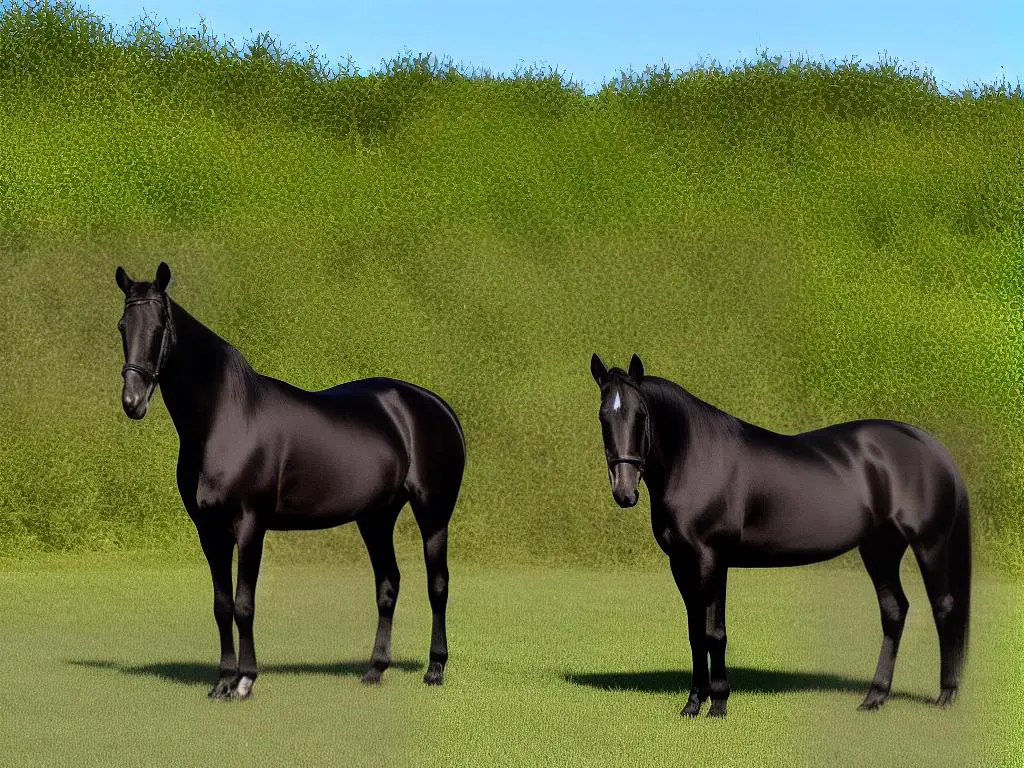
Equipment for Saddlebred horse photography
Investing in Camera Gear
To capture the elegance and beauty of Saddlebred horses, invest in a high-resolution DSLR or mirrorless camera. These cameras offer excellent image quality, lens compatibility, and manual settings, allowing for greater control over your shots.
Choose the right lens for Saddlebred horse photography to complement your camera. A versatile zoom lens, such as a 70-200mm f/2.8, offers flexibility in adjusting focal lengths for close-ups, action shots, and full-body compositions.
Consider adding tripods and monopods to your photography equipment for shooting Saddlebred horses. These stabilization tools help reduce camera shake during long sessions, particularly when using a telephoto lens or heavy gear.
Lighting for Horse Photography
Lighting is another key component of Saddlebred horse photography, especially when shooting in indoor arenas or during dusk or dawn conditions. External flashes, softboxes, or LED panel lights can significantly enhance image clarity and exposure, highlighting the horse’s features and adding depth to the photograph.
When using artificial lighting, make sure to familiarize yourself with the techniques involved, such as bouncing or diffusing the light, to create a natural and balanced effect. It is also essential to remember that the safety and comfort of the horse should always be the priority, so avoid using equipment that could startle, distract, or disrupt the animal during shooting sessions.
Essential Camera Accessories
To become skilled in Saddlebred horse photography, equipping yourself with essential camera accessories, such as polarizing filters, memory cards, and spare batteries, is crucial. Utilizing a polarizing filter can minimize glare and reflections while enhancing color vibrancy and saturation. Having spare memory cards and batteries on hand ensures preparedness for extended shoots, particularly during competitions or multi-day events. By investing in key components and enhancing your knowledge and skills, you’ll be well on your way to capturing stunning images of Saddlebred horses in their prime.
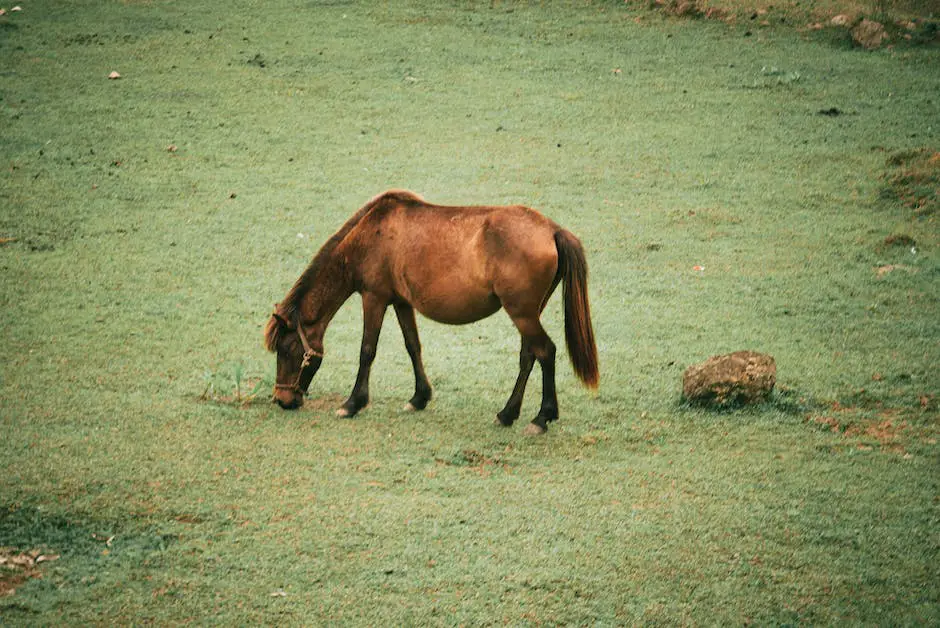
Setting up the perfect shot
A Guide to Capturing the Perfect Saddlebred Horse Photograph
Once you have the essential camera accessories, the next major aspect of capturing the perfect Saddlebred horse photograph is selecting an ideal location. The backdrop should be a top priority, as it plays a significant role in showcasing the elegance and athleticism of these majestic animals. Consider picturesque fields, barns, or outdoor arenas as common settings for your shoot. Opt for a location that contrasts with the horse’s color, allowing it to stand out in the photograph. Moreover, ensure the chosen space is ample and clutter-free, enabling the horse to demonstrate its exceptional movement and grace freely.
Lighting
Lighting is another critical factor in capturing the perfect Saddlebred horse photograph. The time of day can dramatically affect the overall look and mood of the image. Natural light is the best option for capturing the brilliance of these horses. Early morning and late afternoon, often referred to as the golden hour, are the ideal times for shooting. The soft, diffused light during these periods enhances the horse’s lines and provides a warmer, more appealing color. Avoid shooting in harsh sunlight, as it creates hard shadows, washed-out colors, and squinting horses.
Posing the Horse
The horse’s position and posture is crucial in emphasizing the Saddlebred’s unique features. Saddlebreds are prized for their proud carriage, long necks, and high-stepping action. Work with a skilled handler who knows how to showcase the horse at its best. The handler should present the horse in a way that accentuates its arched neck, well-set head, and high tail. Pay special attention to the horse’s legs, capturing the moment when the horse is showing exceptional movement or action. Timing is everything, so work in harmony with your subject and handler to create dynamism in your shots.
Camera Settings
Another essential factor in creating stunning Saddlebred horse photographs is the camera settings. Using a fast shutter speed will help freeze the action and retain the sharpness for those dynamic shots. It’s also wise to incorporate a narrow depth of field, which isolates the subject and creates a soft, out-of-focus background, drawing attention to the horse. Experiment with different angles and perspectives to showcase the Saddlebred’s beauty and uniqueness.
Adding the Human Element
One key aspect to consider when photographing Saddlebred horses is the human element. Riders or handlers dressed in traditional equestrian attire can add an extra layer of sophistication and storytelling to your images. Coordinate with the handler or rider to ensure their outfit complements the horse and setting. Playing with the interaction between horse and human can add a powerful, emotional connection to your photographs, ultimately enhancing the beauty of the Saddlebred and the special bond shared with their owner or handler.
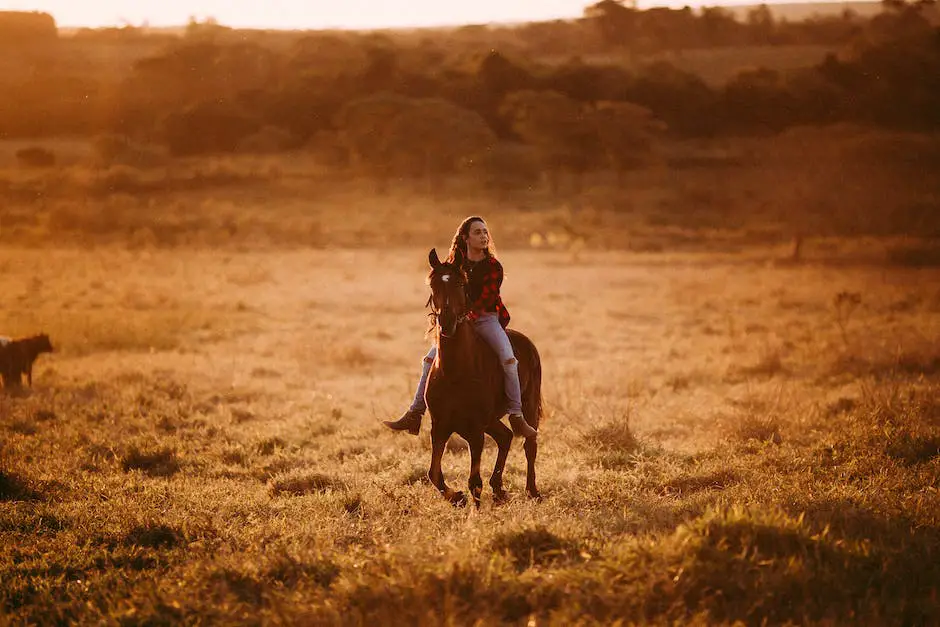
Tips for capturing movement
Capturing Saddlebred Horses in Action
As you incorporate the human element into your Saddlebred horse photography, it’s also essential to capture the horses in action. To achieve optimal results, be sure to use appropriate camera settings. One crucial parameter is shutter speed: since these horses are often moving quickly, select a high shutter speed – at least 1/1000th of a second or faster – to freeze their motion and reduce blur. Additionally, using a continuous shooting mode (often labeled as ‘burst mode’ or ‘sports mode’) allows you to take multiple shots in rapid succession, increasing the likelihood of capturing their unique gaits.
The choice of lens can greatly impact your Saddlebred horse photos as well. A telephoto lens, with a focal length of 200mm and above, is ideal for shooting from a distance while still capturing the horse’s action up-close. Moreover, a lens with a wide aperture, such as f/2.8 to f/5.6, will enable proper exposure in various lighting situations and help create an aesthetically pleasing depth-of-field effect, separating the horse from its background.
Be mindful of your shooting angle when photographing Saddlebred horses. To emphasize their elegant movement and elongated necks, aim for a slightly lower angle by either crouching or sitting on the ground. This perspective will make the horse appear more impressive and accentuate its powerful stride. Furthermore, try to capture the horse moving towards you or diagonally across the frame for a more dynamic photo.
Timing is crucial when capturing the perfect action shot of a Saddlebred horse. Practice observing their gaits, especially the unique high-stepping trot known as the ‘slow gait’ or the energetic, highly-suspended ‘rack.’ Wait for moments of suspension, when all four hooves are off the ground, to take the picture. This will convey the true essence of the horse’s powerful movement and athleticism. In Saddle Seat competitions, try to capture the riders’ excitement and focus during high-stakes moments, such as jump-offs and awards ceremonies.
Finally, incorporate the background scenery into your shots to add additional interest to your Saddlebred horse photos. Look for ways to include the event environment, such as crowd reactions, fencing details, or other equestrian elements in the frame. Providing context to the subject will enhance the storytelling aspect of the photograph and evoke the energy and atmosphere of the competition or showcase. Remember to experiment with different techniques and angles to find the best perspective that highlights the beauty and grace of the Saddlebred horse.
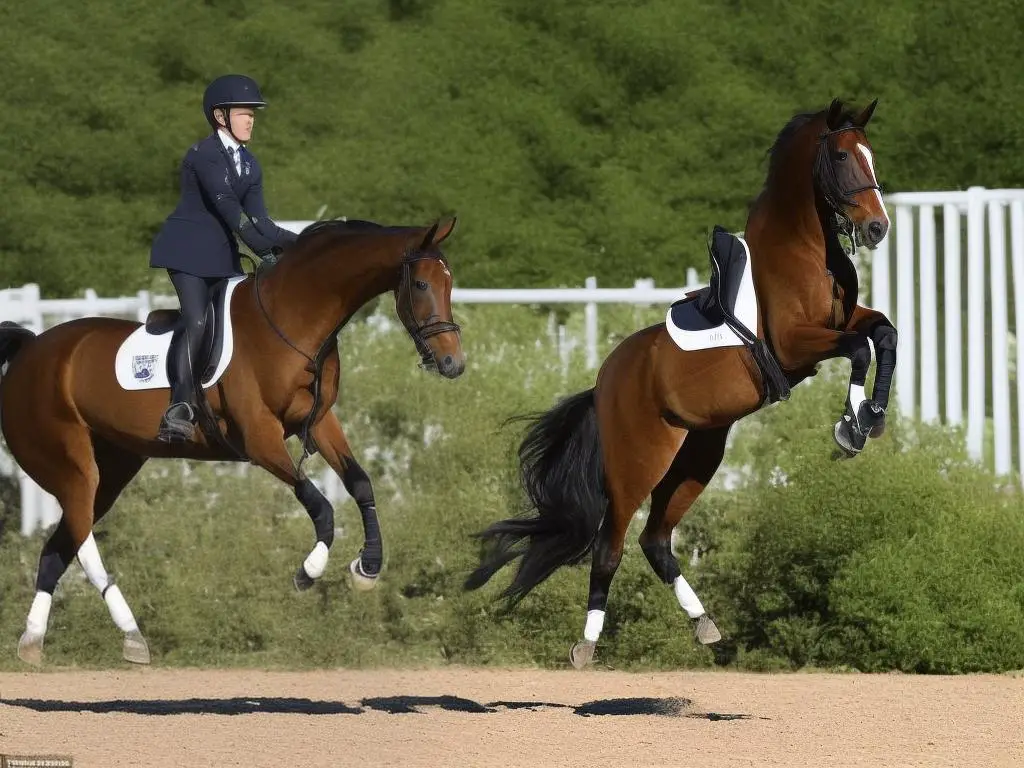
Portrait photography of Saddlebred horses
Perfecting Saddlebred Horse Portrait Photography
After mastering action shots, it’s time to focus on capturing the true beauty and elegance of Saddlebred horses through portrait photography. A well-executed portrait session will reveal the distinct characteristics and expressions of these magnificent creatures, allowing viewers to fully appreciate their striking features and regal presence.
As you develop your skills in portrait photography, concentrate on showcasing the horse’s majestic nature by emphasizing their strong, arched neck and proud carriage. Combining your expertise in both action and portrait photography, you’ll successfully capture the awe-inspiring essence of Saddlebred horses, making your work truly stand out.
Lighting
An important aspect of Saddlebred horse portrait photography is lighting. Taking advantage of natural light is essential to bring out the best in the horse’s features. Early morning or late afternoon is usually the optimal time for outdoor portrait sessions when the sunlight isn’t harsh and direct. Soft, diffused light will enhance the horse’s coat texture and muscle definition while creating a warm, friendly atmosphere. If you’re shooting indoors, a well-lit arena or barn with ample windows and overhead light sources is ideal to minimize harsh shadows.
Camera Equipment
Choosing the right camera equipment is crucial to achieving breathtaking Saddlebred horse portraits. A telephoto lens with a focal length between 70-200mm is recommended, providing the versatility needed to capture the horse from various angles while maintaining a comfortable distance. This ensures the horse remains relaxed and composed while avoiding lens distortion that may exaggerate their features. Apertures between f/2.8 and f/4 will provide a shallow depth of field, ensuring your subject remains sharply in focus against a soft, blurred background, further increasing the portrait’s appeal.
Expression and Demeanor
The expression and demeanor of the Saddlebred horse play a significant role in portrait photography. It’s essential to observe and understand their body language and capture moments when their eyes are bright and attentive, ears are forward, and their overall posture reflects their proud and high-spirited nature. Having a handler or an assistant to keep the horse engaged and looking in the desired direction is helpful, ensuring that each image captures the horse’s unique personality and spirit.
Props and Backgrounds
Incorporating props and unique backgrounds in your Saddlebred horse portrait photography can add an extra dimension and context to the image. By using a rustic barn door or textured wooden fence, you can create a warm, welcoming atmosphere in the portrait. Alternatively, try incorporating a flowering meadow or dramatic landscape to enhance the overall composition. Experimenting with different angles, perspectives, and lighting conditions will enable you to build a diverse collection of captivating Saddlebred horse portraits, ultimately refining your skills as a photographer in this niche.
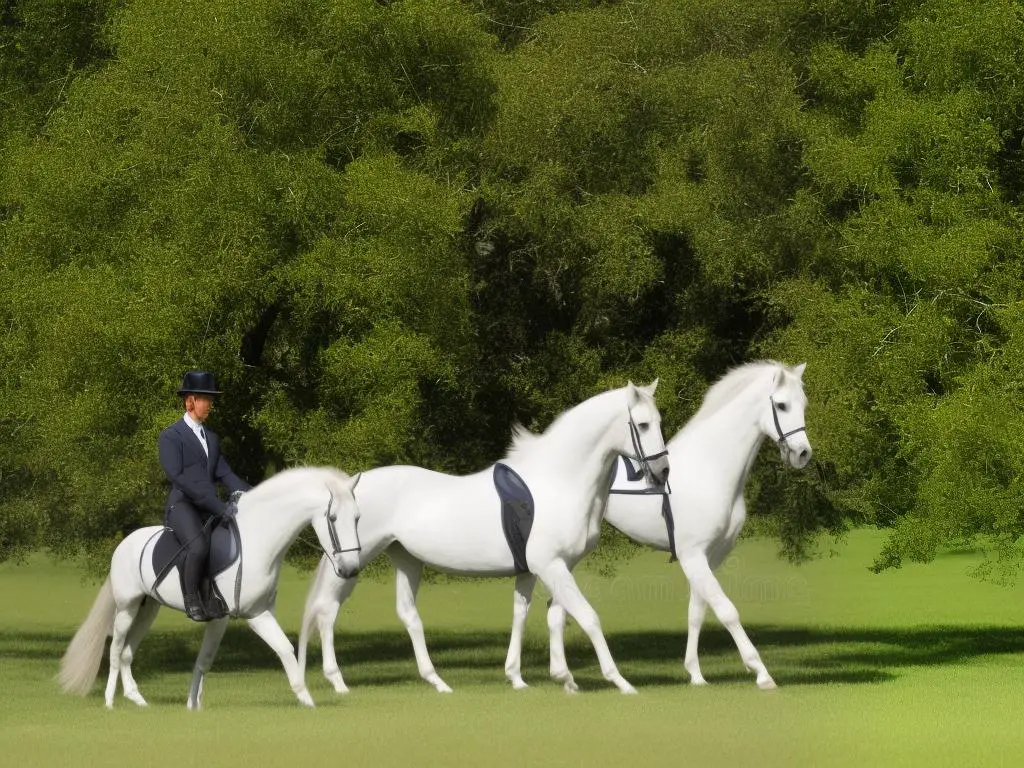
Post-processing and editing
Post-Processing and Editing Techniques
Once you have captured your Saddlebred horse photographs, it’s important to focus on post-processing and editing techniques to enhance the beauty and quality of the images. Popular software applications like Adobe Lightroom and Photoshop offer a range of tools for adjusting color balance, cropping the image, and adding special effects. By mastering the use of these applications, you’ll be able to create stunning and professional-looking images that showcase the grace and elegance of Saddlebred horses, further establishing your expertise in this unique field of photography.
Exposure and White Balance
One important aspect to consider when editing your Saddlebred horse images is to ensure you have captured the correct exposure and white balance in your original photograph. While Lightroom allows you to make global adjustments to exposure, contrast, and color, it is best to start with a well-exposed image to ensure the optimal quality of your final image. Adjusting the exposure in post-processing can often introduce noise, which can detract from the overall clarity and sharpness of your horse photo.
Cropping and Composition
Another crucial aspect of post-processing your Saddlebred horse images is cropping and composition. When refining your images in Lightroom or Photoshop, pay attention to the rule of thirds, as well as the overall balance and harmony of your image. You may need to crop out distractions or unwanted elements within the frame to create a more polished and visually appealing photograph. Additionally, consider straightening the horizon line, as crooked or slanted horizons can detract from the overall professionalism and impact of your image.
Retouching
Retouching your Saddlebred horse photos can also involve selectively adjusting the color, contrast, and detail of specific areas within your image. In Photoshop, you can use layer masks and adjustment layers to target specific areas of your photograph like the horse’s coat, mane, and tail. By enhancing these areas, you can make the overall image of the horse more vibrant and eye-catching. It is essential not to overdo these adjustments, as an excessively retouched image can appear unnatural and overly manipulated.
Special Effects
As an enthusiast looking to become skilled in Saddlebred horse photography, experimenting with special effects can make your images stand out. For instance, try creating composite images by replacing bland backgrounds with more dramatic or visually appealing scenes. Using selection and masking tools in Photoshop, you can seamlessly blend the elements of your composite image for a stunning final result. Additionally, explore various filters and actions within the software to create unique and artistic interpretations of your horse photographs, highlighting the beauty and personality of the Saddlebred breed in a new light.
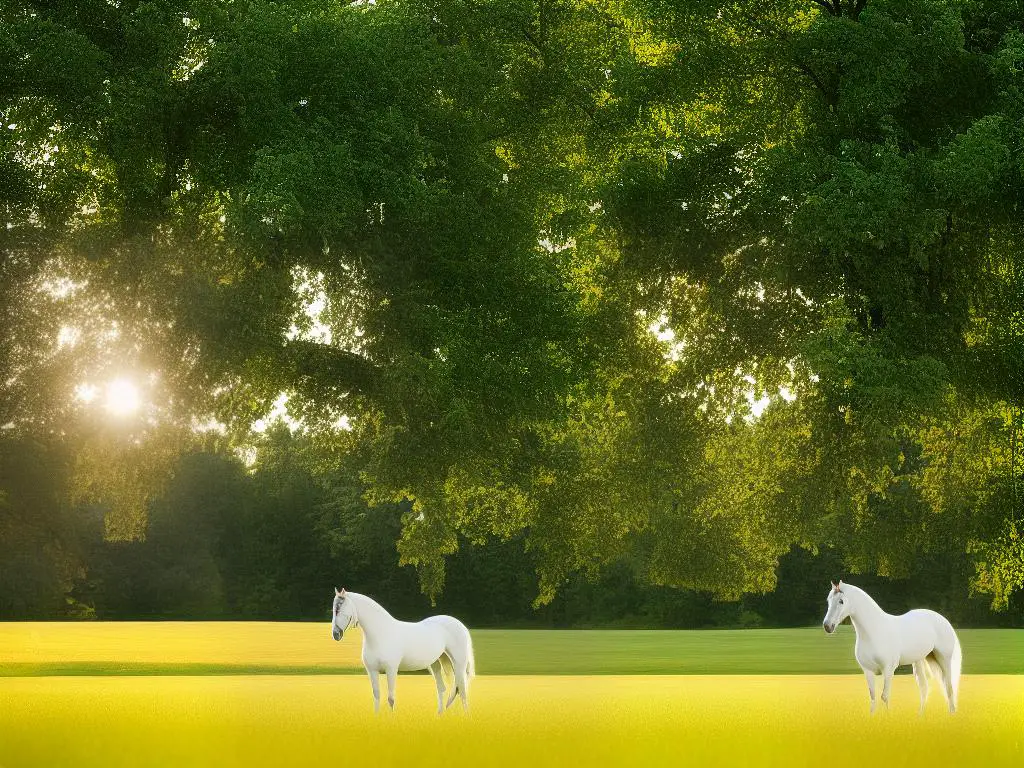
Building a portfolio and sharing your work
Building a Portfolio
As you progress in your Saddlebred horse photography journey, building a strong portfolio is key to showcasing your work and capturing the unique qualities of this exceptional breed. Start by selecting your best shots that exhibit your ability to capture the movement, grace, and character of these magnificent animals. Take the time to edit and perfect each image, ensuring that your portfolio features your highest quality work. Diversify your portfolio by experimenting with different angles and settings, including horses in motion, close-up portraits, and natural settings, to display a comprehensive range of Saddlebred photography skills.
Developing Your Style
Developing your unique style as a Saddlebred horse photographer is crucial in making a name for yourself within the equestrian community. Pay close attention to the lighting, composition, and mood of your photographs, and try to convey the emotions and spirit of the Saddlebred horse. Be open to inspiration from other photographers, but always strive to put your personal spin on each image. As you continue to grow and refine your craft, you will find that your distinct style emerges, setting you apart from other Saddlebred horse photographers in the industry.
Sharing Your Work
Once you have a solid portfolio, sharing your work with others is crucial for growth and exposure. Social media is a powerful tool for promoting your Saddlebred horse photography to a wider audience. Utilize platforms such as Instagram, Facebook, and Pinterest to post your images and engage with other horse enthusiasts who share a passion for these beautiful creatures. In addition to social media, create a professional-looking website to showcase your portfolio and attract potential clients. A well-designed website will allow visitors to explore your work and contact you for commissions or inquiries.
Print Materials
In addition to online platforms, consider utilizing print materials to showcase your Saddlebred horse photography skills. Submit your work to equestrian publications, such as magazines and horse-related blogs, to gain exposure among a targeted audience. Alternatively, you can create your own print materials, such as calendars or photo books, to sell at horse-related events or gift to potential clients as a form of marketing.
Collaboration
Collaboration with other professionals within the equestrian industry can also lead to exciting opportunities for exposure and skill-building. Reach out to Saddlebred trainers, riding schools, or horse show events to offer your photography services for promotional material, event coverage, or personal shoots. This will not only help build your portfolio but also expand your network, leading to potential future collaborations and recommendations within the industry. As you continue to nurture relationships and refine your skills, your Saddlebred horse photography will undoubtedly garner respect and recognition from fellow horse enthusiasts and professionals alike.
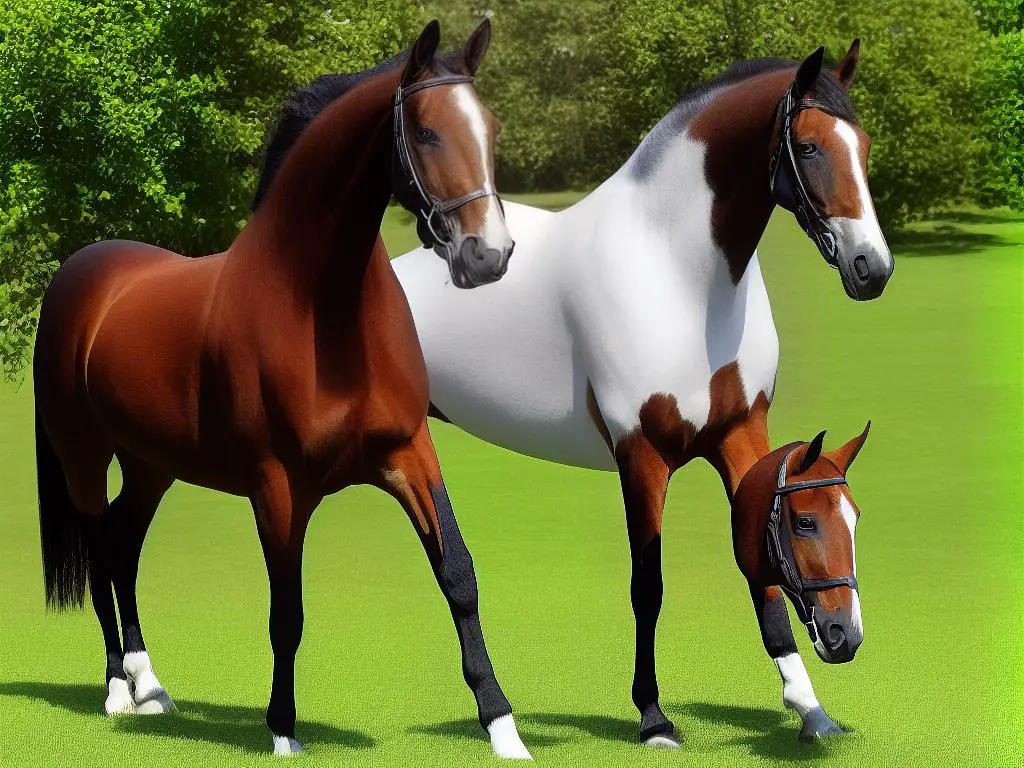
Mastering the art of Saddlebred horse photography is an enriching and rewarding journey that requires patience, creativity, and an eye for detail. As you continue to refine your skills, explore new locations, and experiment with different techniques, your portfolio will grow, and your work will resonate with a broader audience. By sharing your love for these incredible animals and your undeniable talent for capturing their essence, your Saddlebred horse photographs will become a testament to the power and prestige of this remarkable breed.
